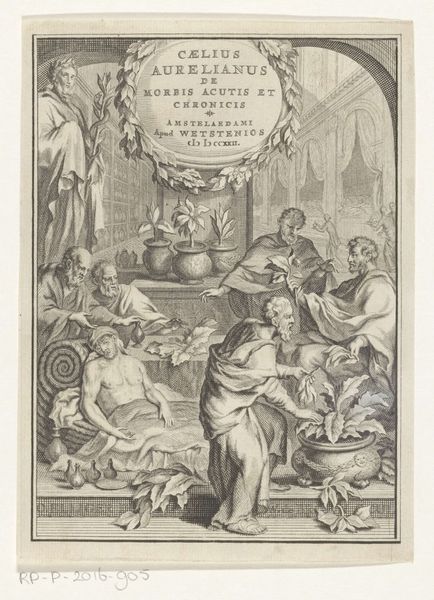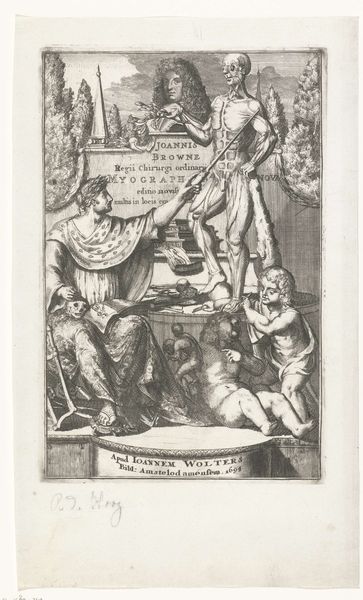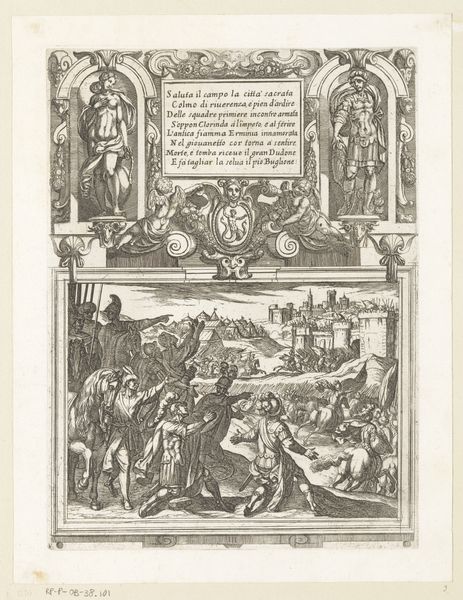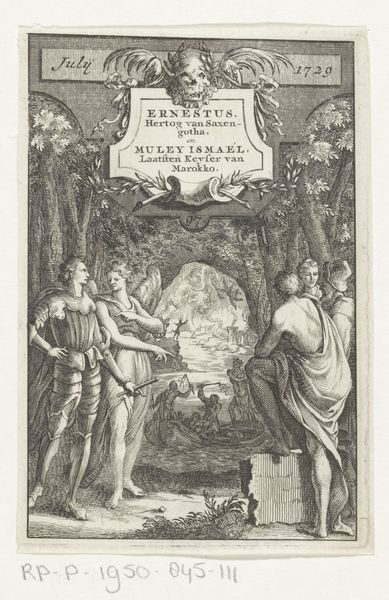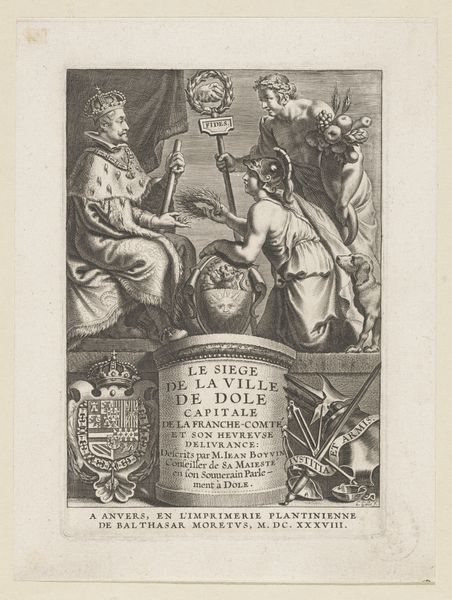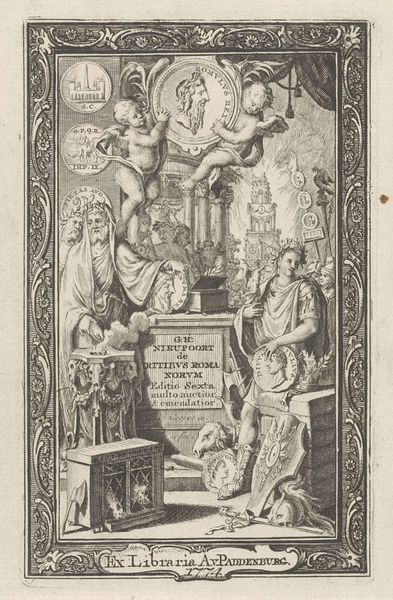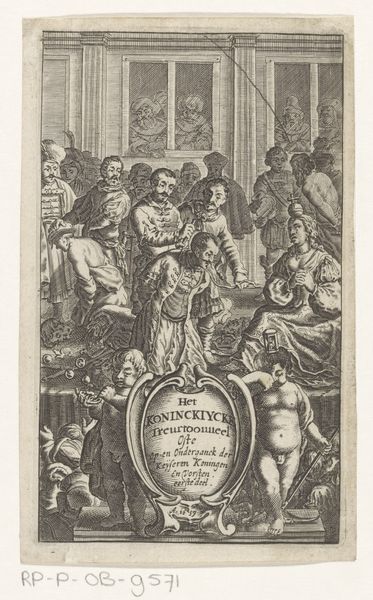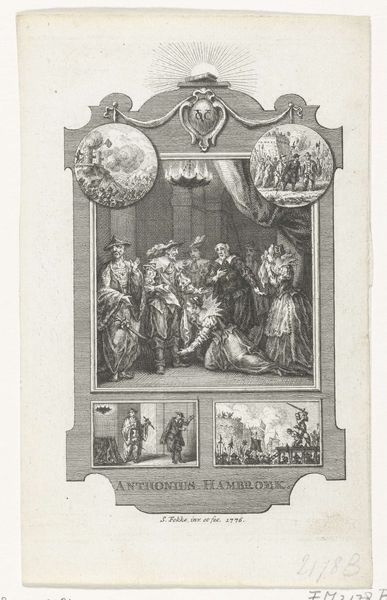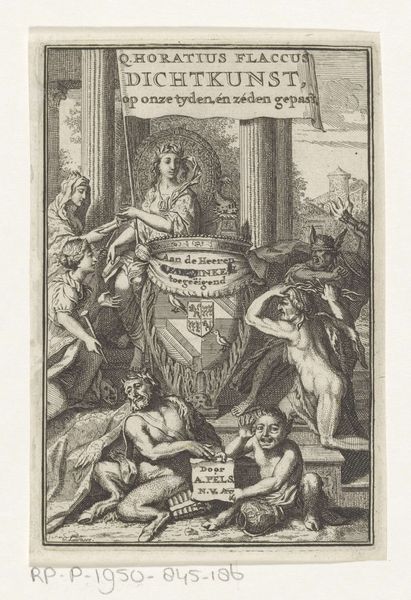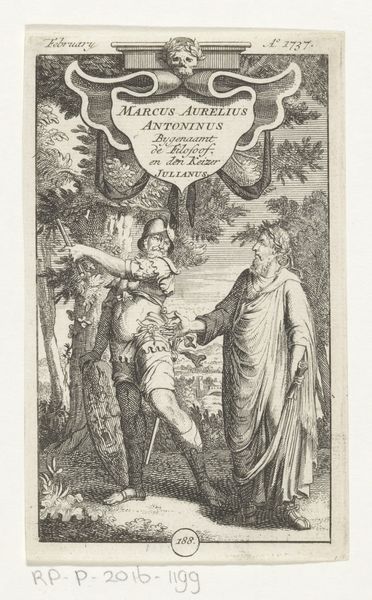
engraving
#
allegory
#
baroque
#
old engraving style
#
landscape
#
figuration
#
line
#
history-painting
#
academic-art
#
engraving
Dimensions: height 288 mm, width 181 mm
Copyright: Rijks Museum: Open Domain
Curator: Here we have an engraving from around 1640, attributed to an anonymous artist, titled "Allegory of Italy." It’s currently housed at the Rijksmuseum. Editor: Immediately striking is the density of figures and symbols, almost overwhelming. There's a distinct duality here, a push and pull between classical imagery and what seems to be a slightly darker, more turbulent undercurrent. Curator: That’s an interesting point. Let’s unpack the iconography a bit. You'll notice the central female figure, adorned with a crown and holding aloft what appears to be a laurel wreath, signifying glory and triumph. This figure embodies Italia, elevated, regal… but look closer at the social and political implications. The image participates in an allegorical language deeply entrenched in the politics of its time, representing power dynamics. Who benefits from this representation of 'Italy'? Whose voices are amplified, and whose are silenced? Editor: The wreath immediately stood out to me. It is classical in nature, but is transformed into an obvious indication of dominance. Below, at the bottom, the river gods hint to me at the land, to nature tamed...or so they suggest through the very controlled waterfalls and grottos behind them. There’s such visual storytelling layered within these figures. Curator: Precisely! And notice how the artist uses the academic style of line engraving to emphasize these hierarchical relationships? The distinct, controlled lines suggest a very ordered society, yet... I see a tension within the style. A baroque restlessness threatening the supposed stability. This artistic choice serves as commentary; order can quickly devolve when certain populations don't adhere. The image naturalizes assumptions that the social order depicted is inherently fair. Editor: I think that duality is especially striking, looking closer now at that juxtaposition of clarity and confusion in the sheer number of details fighting for our eye, like those miniature figures partially obscured by foliage near the bottom left. They evoke an ambiguous sensation – are they hiding or are they simply part of the landscape, just out of focus? Curator: Perhaps they're meant to represent the 'unseen' people upon which the dominant power structures depend. Or a visual manifestation of unease bubbling just under the surface of a seemingly idyllic state. The engraving technique itself—the precise control yet the overwhelming density—mirrors this uneasy balance. Editor: That's definitely given me something to consider, a whole new context in which to perceive this piece. I suppose that every single element here is so tightly woven into that period’s idea of itself, offering countless potential starting points to dive into this piece and Italian national identity at that time. Curator: Absolutely, an interrogation of the values, assumptions, and power dynamics baked into even the most seemingly innocuous symbols is central to unlocking these pieces for all people, from every possible background.
Comments
No comments
Be the first to comment and join the conversation on the ultimate creative platform.
